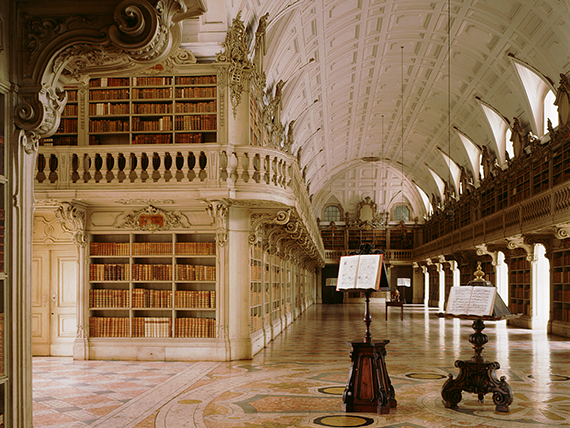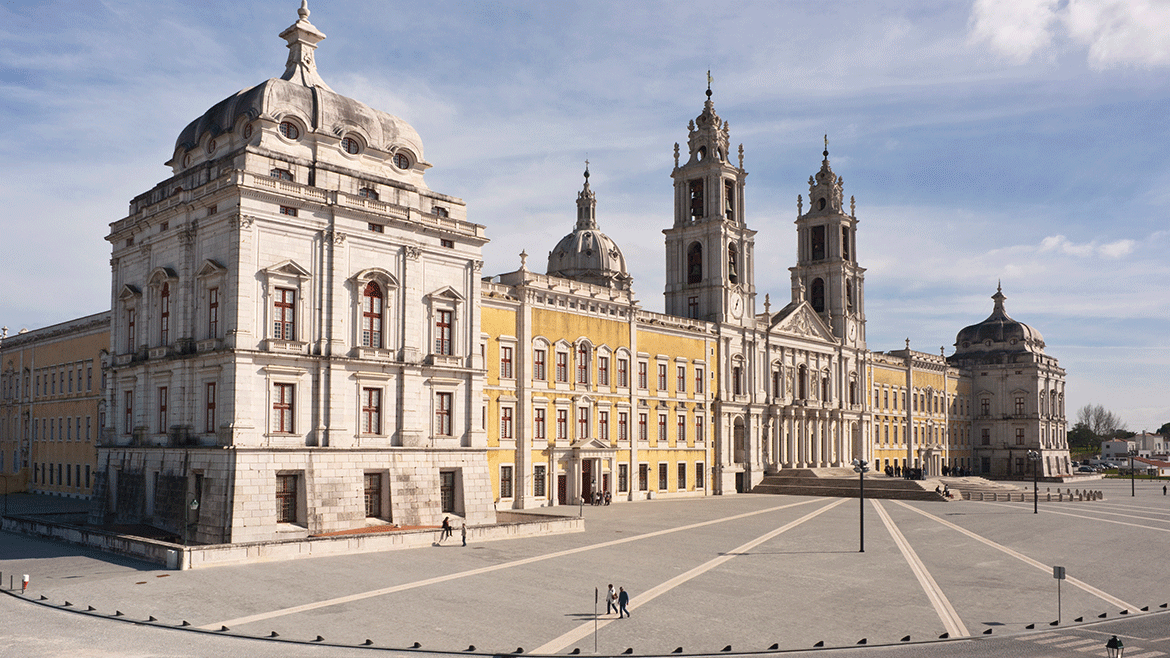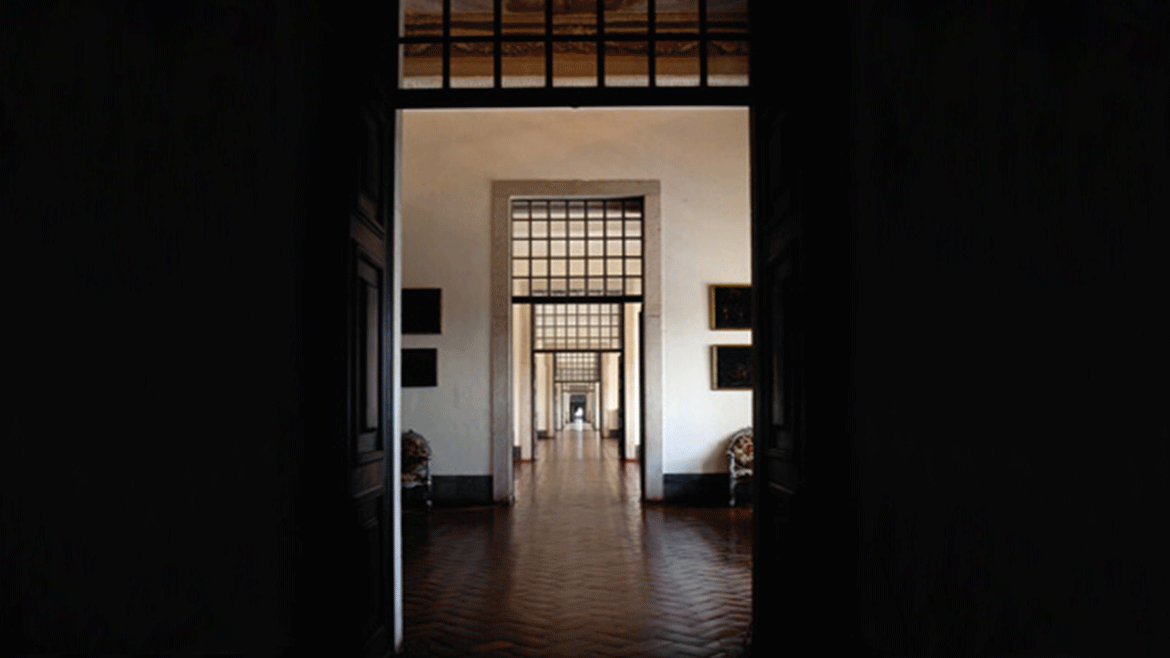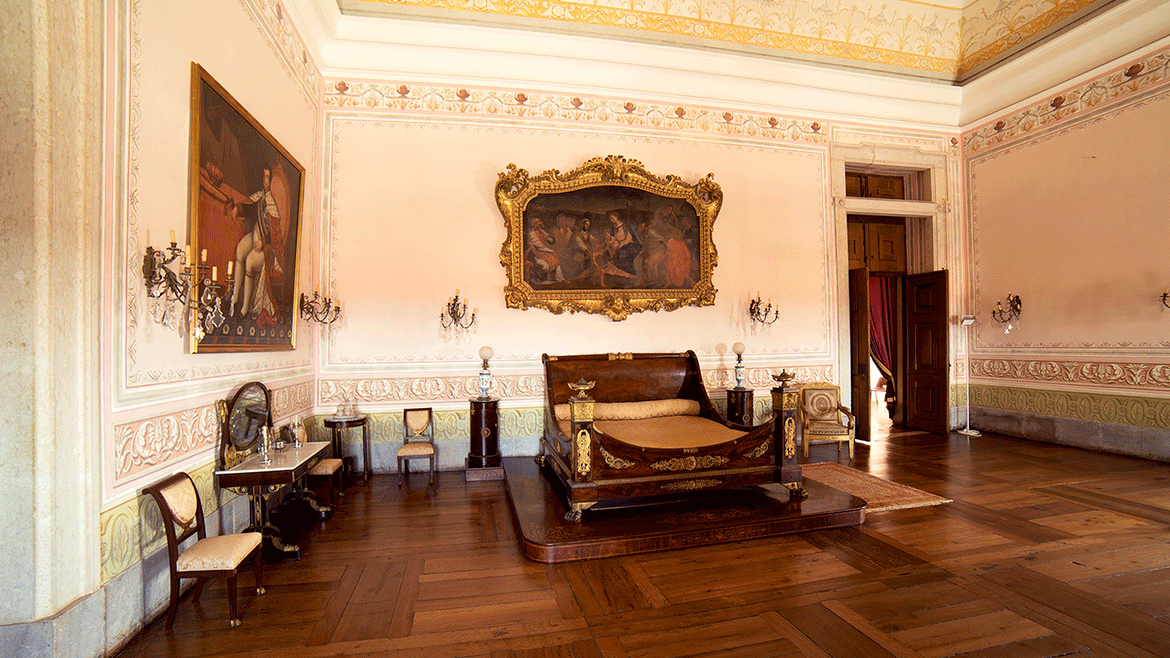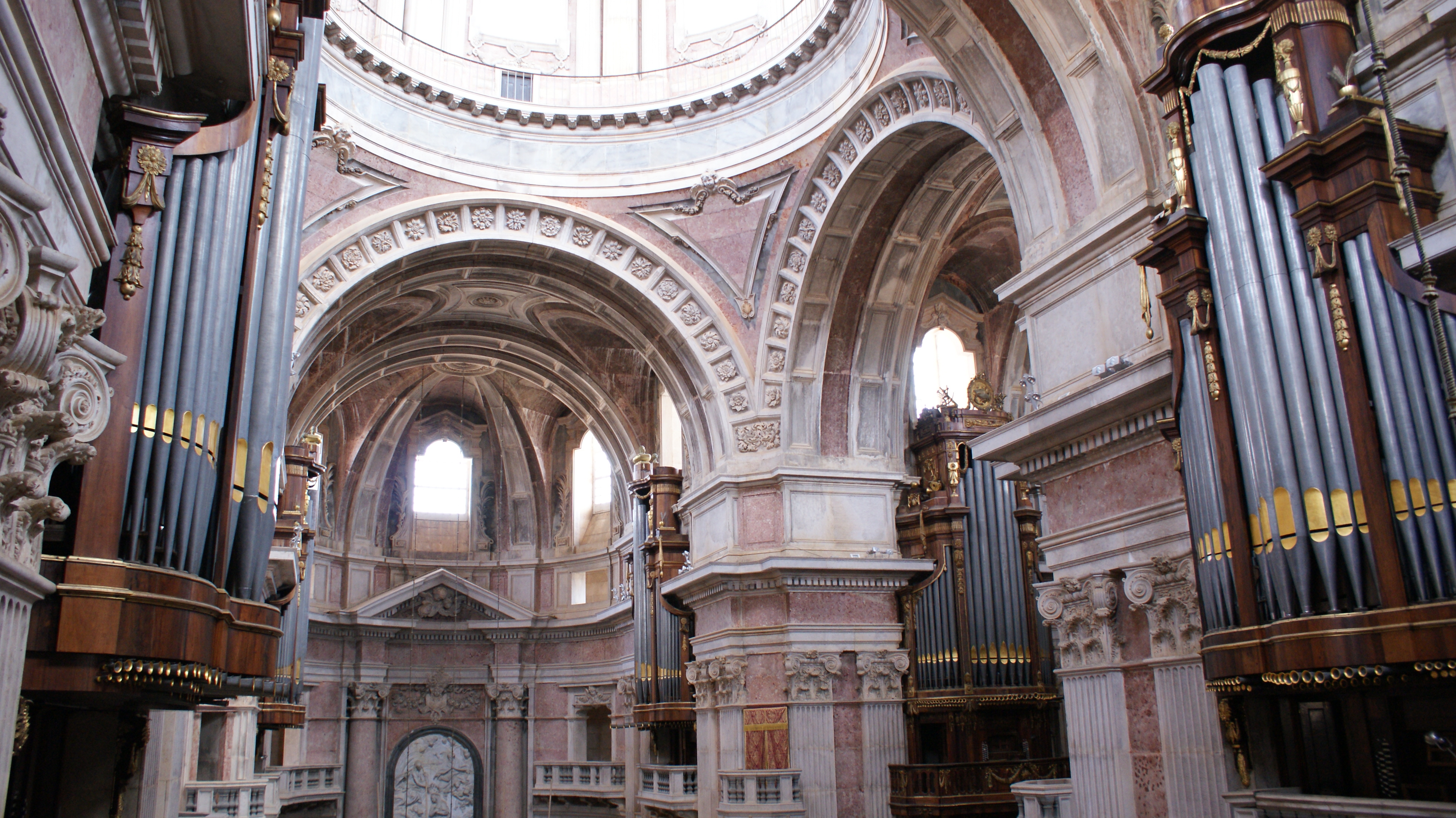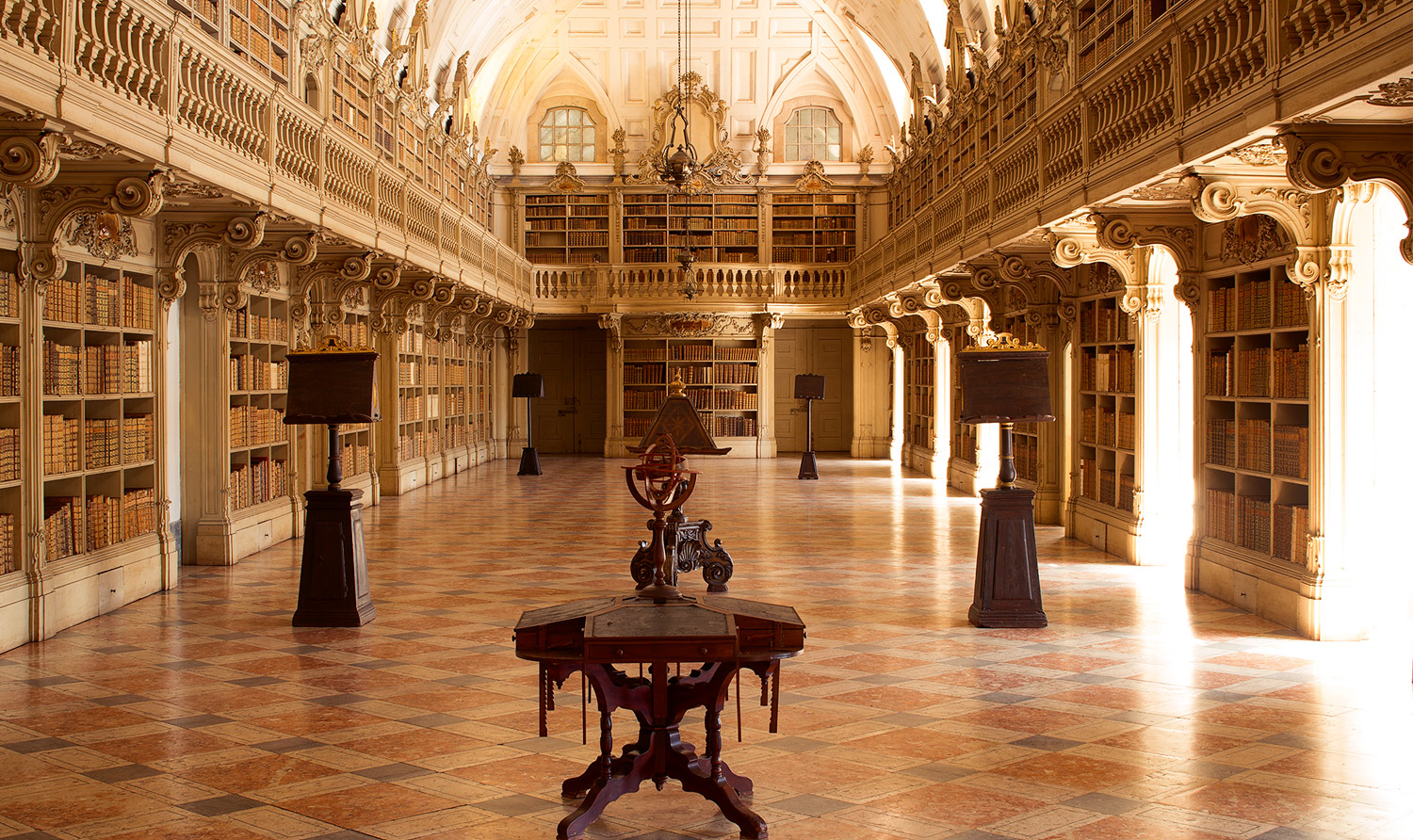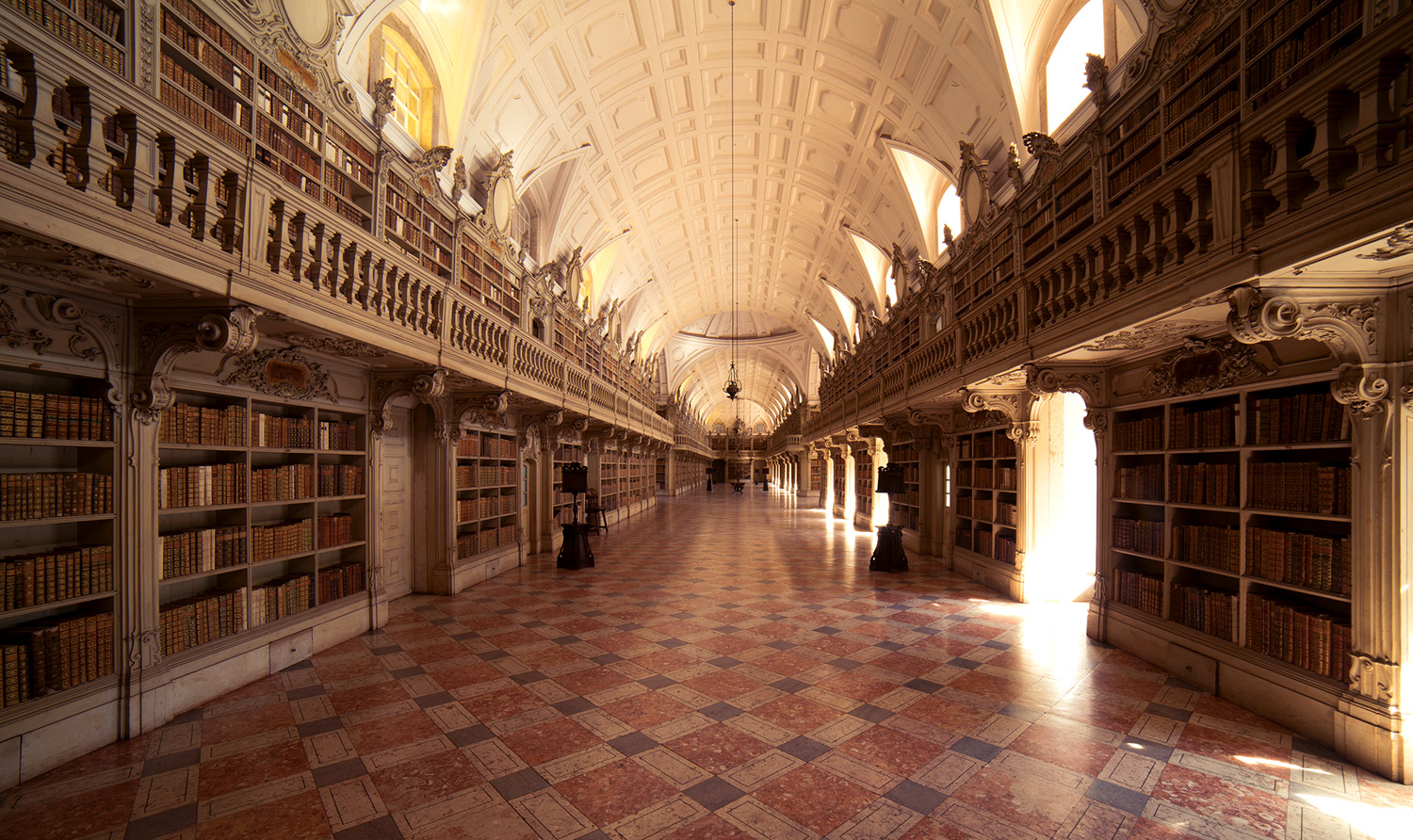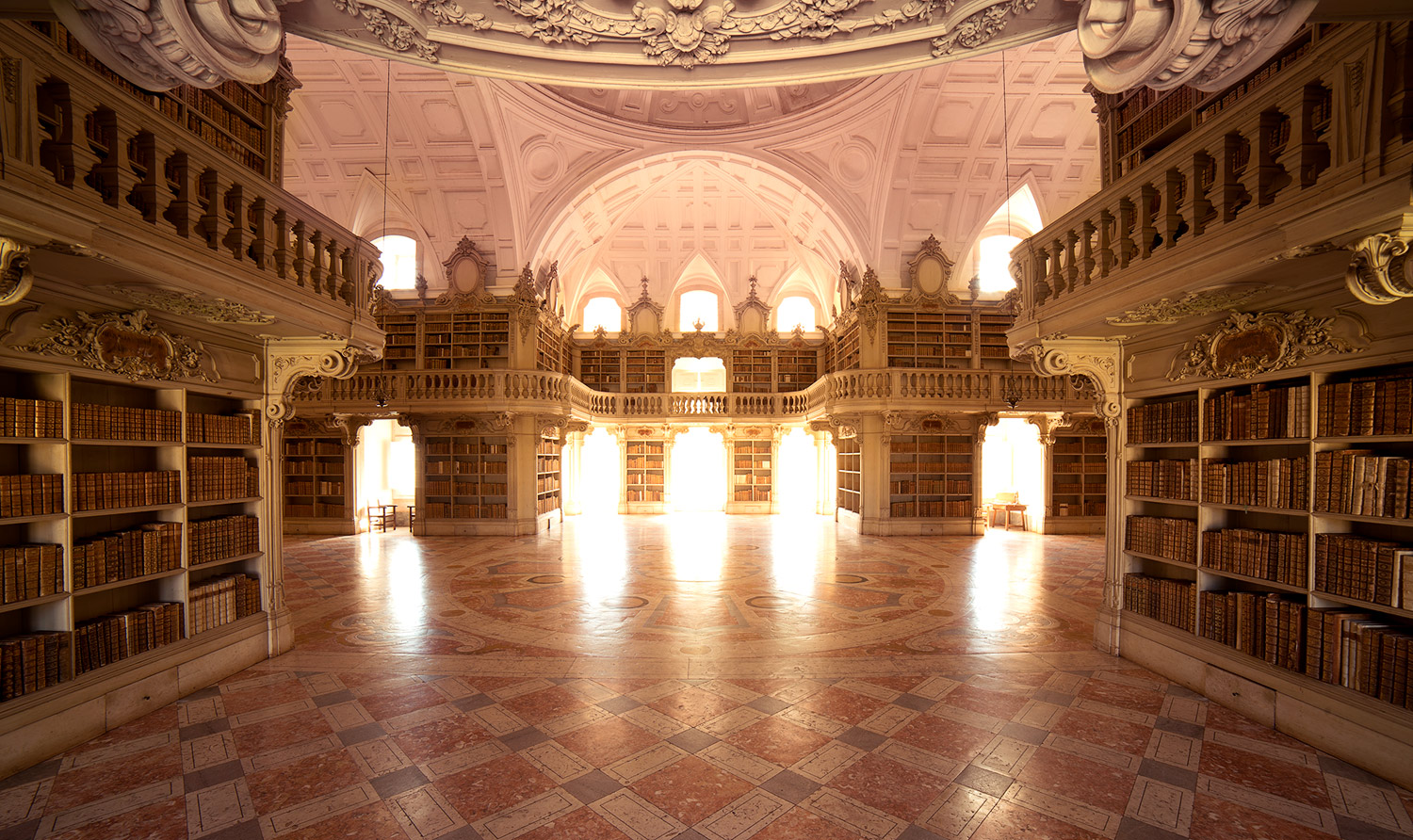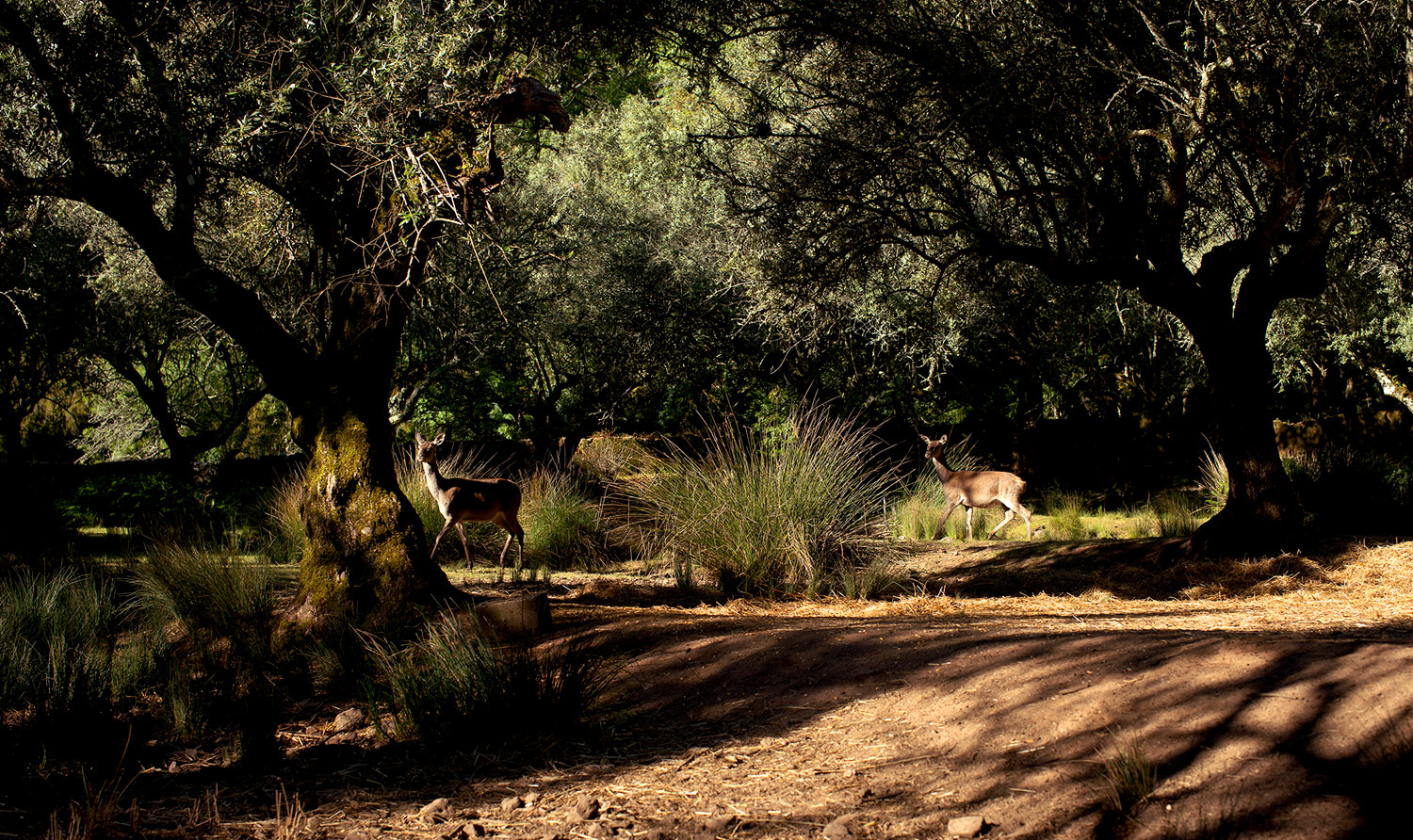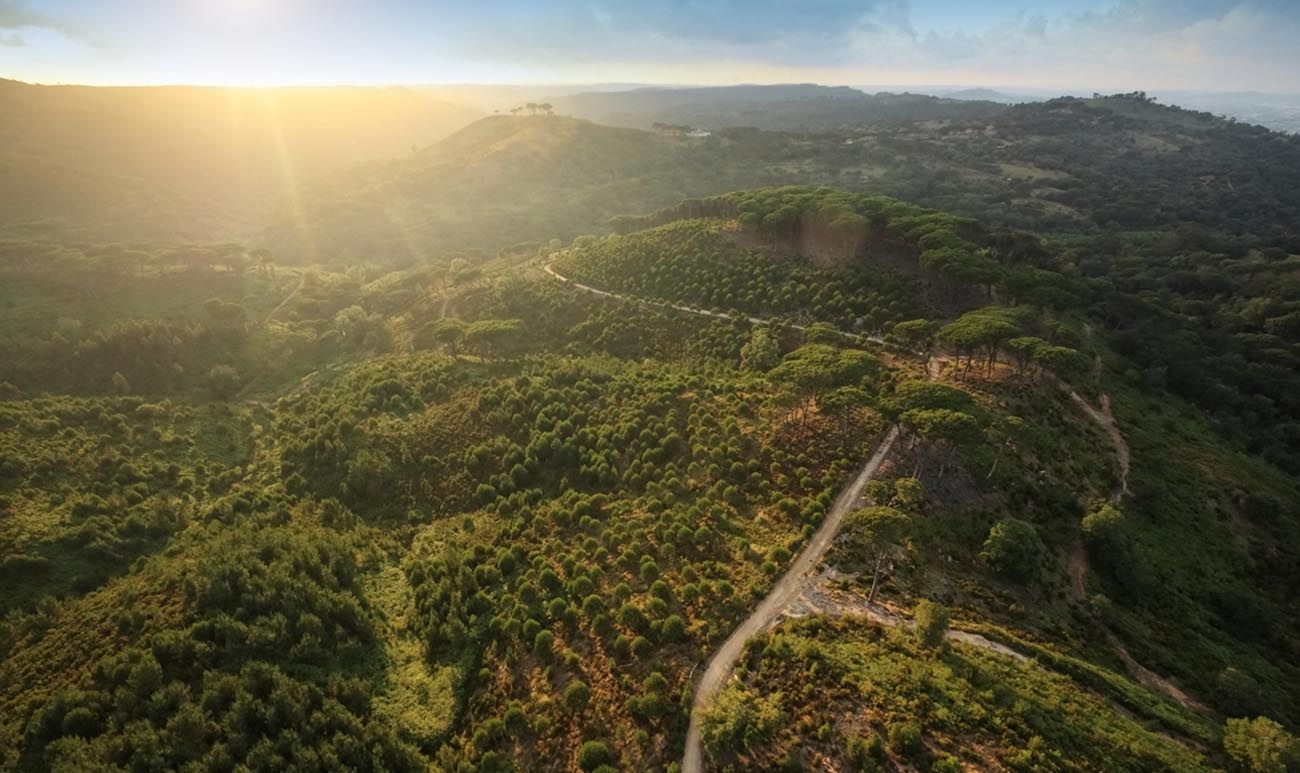National Palace of Mafra
Saramago Route
Get to know its history
Published in 1982, “Baltasar and Blimunda” is José Saramago’s most iconic novel. Translated into more than 20 languages, in over 50 editions, it examines a recurring theme in the writer’s work: the clash between rich and poor, the exploiter and the exploited.
The story takes place in the 18th century during the reign of João V, the king responsible for building the Monastery of Mafra, an enormous project paid for out of the gold imported from Brazil, which at the time was a Portuguese colony.
The contrast between the king’s megalomania and the misery of the common people who built the monastery runs through the whole novel and is scathingly evoked by the writer. And, inevitably, in the midst of all this, an enchanting love story unfolds.
The National Palace of Mafra was proclaimed a UNESCO World Heritage Site in 2019.
Built by order of King João V, consists of a Royal Palace, a basilica, a convent and a game reserve. Highlights include 2 carillons, 6 historic organs, a library and an 18th century infirmary.
The Royal Palace occupies the noble floor of the Mafra building and the 2 turrets.
The north turret was occupied by the king and the south turret by the queen, and both turrets are linked by a 232-metre gallery – making it Europe’s largest palatial corridor. This building, of about 40,000 m2, housed a Franciscan convent (300 fryers) – and features Campo Santo, the Infirmary, the Elliptical Hall (capitular), the Literary Acts Hall, the Stairway and the Dining Hall.
The Royal Convent and Palace of Mafra is the most important baroque monument in Portugal. The building covers an area of almost four hectares (37.790 m2), including 1.200 rooms, more than 4.700 doors and windows, 156 stairways and 29 inner yards and courtyards.
Such magnificence was only possible due to the Brazilian gold that poured into the country, allowing the King to carry out his patronage of the arts and the strengthening of royal authority.
The Library of the National Palace of Mafra
It boasts a large library thought to be one of the most beautiful in the world.
The National Hunting Grounds of Mafra were established in 1747 with the objective of providing surroundings appropriate to the Monument along with providing a recreational hunting ground for the King and his Court and in addition to supplying firewood and other products to the Convent. Covering an area of 1,187 hectares, the Royal Hunting Grounds of Mafra were entirely surrounded by a worked limestone wall across a length of 16 Km.

